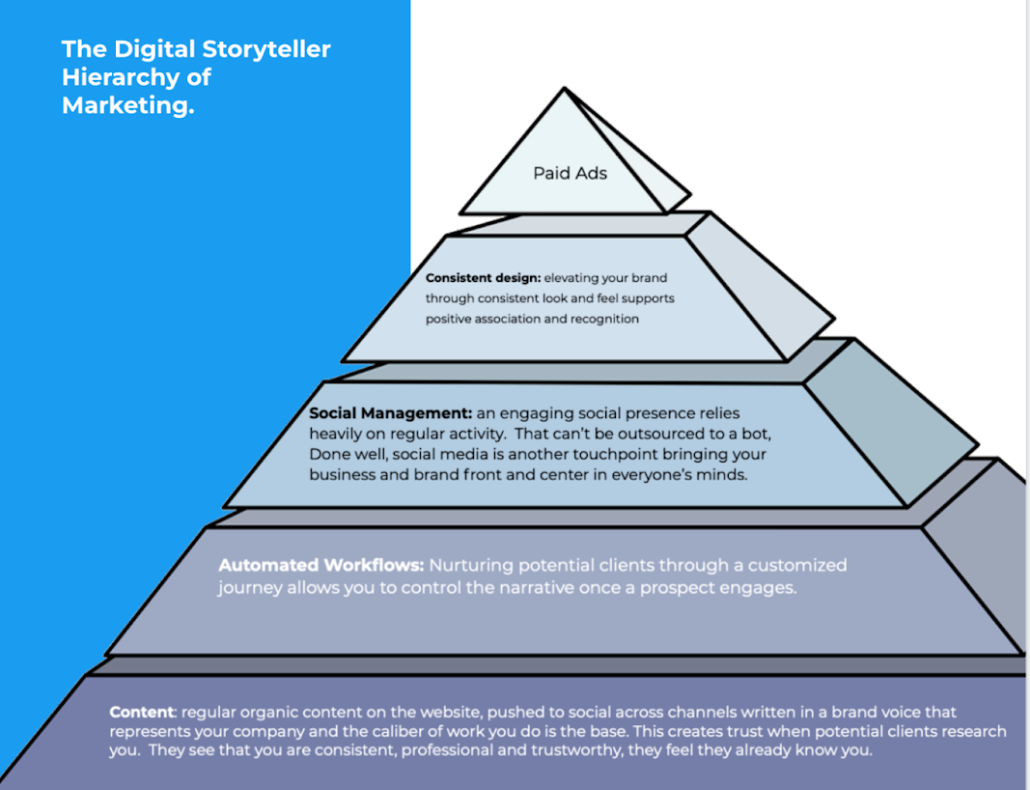2024 is knocking on the door, and it’s time to get down to brass tacks with your marketing budget. No fluff, just the nitty-gritty.
According to insights from Gartner, your marketing budget should devour roughly 9.1% of your total company revenue. Other sources recommend rounding that number to approximately 10%.
However, it’s not just about setting a marketing budget; it’s about the smart allocation of that budget across various marketing channels. Let’s discuss how to make that happen.
Review Past Performance
Data Analysis
Before allocating your budget, it’s crucial to conduct a thorough review of your marketing activities in the current year. This review should encompass an examination of key performance indicators (KPIs) for each campaign.
Dive into the data, both broad and detailed, to understand what worked…and what didn’t. Analyze the performance of digital marketing strategies and influencer collaborations, leaving no aspect unexamined.
ROI Assessment
Pay close attention to Return on Investment (ROI). By understanding which initiatives generated the most significant returns, you can make data-driven decisions about budget allocation for the upcoming year. Identify trends and recognize successful strategies while pinpointing areas that may require improvement.
In simpler terms, spot the winners that made it rain and, of course, those duds that couldn’t even summon a drizzle. We like to think of it as solving the thrilling case of “Where The F*&# Did Our Money Go?”
Set Clear Objectives
Strategic Goal Definition
Establish your budget objectives as the guiding principles for your marketing efforts. What are your strategic goals for 2024? Are you planning to launch new products, expand into new markets, or revamp your brand’s image?
Marketing and Sales Targets
Beyond overarching goals, define specific marketing and sales objectives. This includes objectives such as enhancing brand awareness, generating leads, improving online conversion rates, or hosting significant events. Setting these goals early not only provides direction but also allows you to plan your resources strategically and allocate your budget effectively to achieve each objective.
Research Industry Trends
Keeping Current
Stay updated on industry trends and innovations that can impact your marketing strategy. This involves monitoring your competitors’ activities and market trends in a proactive manner. If your competitors are planning significant moves, like rebranding or expanding their market share, you need to be prepared to respond with your own marketing initiatives.
Experimentation Budget
Allocate a portion of your budget for experimentation. Testing new approaches, emerging technologies, or novel marketing strategies can give you a competitive edge. This allocation allows you to explore innovative methods without risking your entire budget, providing room for adaptation and learning.
Identify Priority Channels
Channel Analysis
Scrutinize the performance of your various marketing channels, including earned, owned, paid, and shared channels. Assess their contribution to your marketing and business objectives.
Budget Allocation
Allocate your budget based on each channel’s importance to your goals. Recognize that one channel may excel in generating leads, while another may be more effective at closing sales. A balanced distribution of resources ensures that you have the right mix of channels to meet your objectives effectively.
Assess Seasonality and Campaigns
Strategic Timing
Now, isn’t this the part where we dust off our past campaigns and have a grand ol’ time with spreadsheets? Let’s dive into those archives and analyze the ebb and flow of demand. We also recommend creating a rough campaign calendar for upcoming marketing initiatives and crucial activities such as product launches.
Resource Allocation
Distribute your budget across this calendar strategically to ensure that your marketing efforts have maximum impact when it matters most. Think of it as the strategic chess game of your marketing calendar. The aim? Making sure your marketing efforts hit their mark with precision during those critical moments. Why? Because making smart budget moves during peak times can unlock remarkable returns.
Evaluate Internal Capabilities and Outsourcing Needs
Team Assessment
Evaluate your team’s skills and capacity to handle the expected marketing workload in the new year. Determine if additional resources or expertise are required for specific tasks such as graphic design, content creation, or digital marketing.
Budget for External Resources
Don’t forget to factor in the budget for those outsiders we sometimes need to save the day. Whether it’s printing, photography, or calling in the specialists, make sure your budget has room to patch up any skill gaps within your team.
Now that we’ve covered the nuts and bolts of budget allocation and external resource planning, let’s delve into the power of Organic Marketing Strategy for cost-effective growth.
We Need to Talk About Organic Marketing Strategy: Budget-Friendly Growth
Organic marketing strategies like content marketing, SEO (Search Engine Optimization), and social media engagement are not just buzzwords; they’re practical tools that can help your brand grow without blowing your budget. Here’s why they’re a wise choice and how to allocate your budget effectively:
Why Organic Marketing is Budget-Friendly
Long-Term Benefits: Unlike paid advertising, which stops delivering results the moment you stop spending, organic strategies continue to provide value over time. A well-optimized piece of content, for instance, can attract traffic and leads for years without additional costs.
Cost-Effective: Creating high-quality content, optimizing your website for search engines, and engaging with your audience on social media are cost-effective activities. You don’t need a massive advertising budget to get started.
Builds Trust: Organic marketing helps build trust with your audience. When you provide valuable content and engage authentically, you’re more likely to establish long-lasting relationships with customers, reducing the need for costly customer acquisition campaigns.
Targets the Right Audience: By creating content that addresses specific pain points and questions your target audience has, you’re more likely to attract qualified leads who are genuinely interested in your products or services. This means you’re not wasting your budget on uninterested viewers.
What Exactly to Include in Your Organic Marketing Budget
Content Creation: Allocate funds for creating high-quality, valuable content. This includes blog posts, videos, infographics, and other content that resonates with your audience.
SEO: Invest in SEO activities to optimize your website and content for search engines. This may involve keyword research, on-page optimization, and backlink building.
Social Media Management: If you’re active on social media platforms, consider budgeting for social media management tools or outsourcing social media tasks.
Email Marketing: While email marketing is often considered part of organic marketing, it may involve some costs for email marketing software and list management.
Analytics and Monitoring: Budget for analytics tools that help you track the performance of your organic marketing efforts. This data is essential for making informed decisions and optimizing your strategy.
Professional Services: If you lack in-house expertise, consider budgeting for professional services such as content writing, SEO consulting, or social media management.
Experimentation: Set aside a portion of your budget for experimentation. Test new content formats, SEO strategies, or social media campaigns to see what works best for your audience.
Training and Education: Continuous learning is essential in the ever-evolving field of digital marketing. Allocate a budget for training and education to keep your team updated with the latest trends and best practices.
Need Help With Your Marketing?
Plan to succeed in 2024 with a thoughtful, strategic, and well-researched marketing budget – Your future self will thank you.
As a digital marketing agency, we know firsthand the challenges and opportunities that businesses face when it comes to budgeting and executing effective marketing campaigns.
Our mission is to understand your business inside out, grasp your unique brand voice, and then let the world know just how awesome you are. We don’t just focus on the “what” of marketing; we dive deep into the “why” and “how.” We start every engagement with a Brand Storytelling Session to identify your brand’s essence. From there, our team utilizes bi-weekly client calls and shared content calendars to keep you in the loop every step of the way.
We bring fresh, innovative ideas from our kick-a** creative team, all rooted in a relationship built on trust. Because that’s the essence of digital marketing – it’s not just about numbers and algorithms; it’s about connecting with your audience authentically and leaving a lasting impact.
Interested in learning more about us? Let’s chat.

















